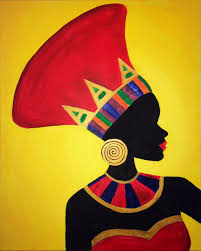The Evolution of Contemporary Art: From Modernism to Postmodernism
Abstract: This article traces the trajectory of contemporary art from the modernist period to the postmodern era, examining key movements, artists, and concepts that have shaped the artistic landscape of the 20th and 21st centuries. Through an exploration of avant-garde experimentation, aesthetic revolutions, and critical shifts in artistic paradigms, this piece seeks to elucidate the evolution of contemporary art and its complex relationship with society, culture, and technology.
Introduction: The introduction sets the stage by defining modernism and postmodernism as overarching frameworks within which contemporary art has developed. It discusses the historical context of modernism, highlighting its emphasis on innovation, abstraction, and the avant-garde spirit, as well as its rupture with traditional modes of representation. The introduction also introduces the concept of postmodernism as a reaction against modernist ideals, characterized by pluralism, irony, and a skepticism towards grand narratives.
Main Body:
- Modernism: This section provides an overview of modernist movements such as Cubism, Surrealism, Abstract Expressionism, and Minimalism, examining their formal innovations, philosophical underpinnings, and cultural significance. It discusses the pioneering work of artists like Pablo Picasso, Wassily Kandinsky, Jackson Pollock, and Donald Judd, and analyzes the ways in which modernism challenged conventions of representation and perception.
- Postmodernism: Building upon the foundation laid by modernism, this section explores the emergence of postmodern art in the latter half of the 20th century. It discusses the fragmentation of artistic styles and the rejection of a singular aesthetic authority, as evidenced by movements like Pop Art, Conceptual Art, and Neo-Expressionism. Artists such as Andy Warhol, Marcel Duchamp, and Jean-Michel Basquiat are examined within the context of postmodernism’s engagement with mass media, consumer culture, and the commodification of art.
- Contemporary Perspectives: Looking beyond the strict chronology of modernism and postmodernism, this section considers contemporary approaches to art-making in the 21st century. It discusses the fluidity of artistic boundaries, the rise of interdisciplinary practices, and the influence of globalization and digital technology on artistic production and dissemination. Artists working in diverse media, from installation and performance to video and internet art, are showcased as exemplars of contemporary experimentation and innovation.
Conclusion: The conclusion reflects on the enduring legacy of modernism and postmodernism in contemporary art, acknowledging their continued relevance as well as their limitations in addressing the complexities of our contemporary world. It suggests that the evolution of art is an ongoing process, shaped by shifting cultural dynamics, technological advancements, and evolving conceptual frameworks.
By tracing the trajectory of contemporary art from modernism to postmodernism, this article aims to provide readers with a comprehensive understanding of the diverse influences and trajectories that have shaped artistic practice in the modern and contemporary periods.

